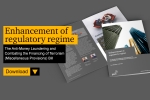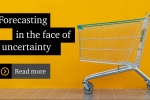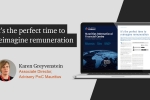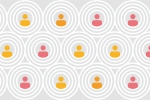eMauritius 2020 - PwC
26 April, 2017
by Jean-Pierre Young, Partner and Advisory Leader, PwC Mauritius
The world is facing unprecedented change, be it economical, societal or technological, and Mauritius is not going to be spared. We have all heard about the Megatrends, so how relevant are they to us? What do we need to see happening so that we ride on this wave, and be the game changer rather than just a simple spectator!
Technology is definitely going to be THE big enabler. Everything around us will be driven by technology, our fridges will be ordering fruits, dairy products, vegetables and meat when they run low, homes are becoming smart with connected devices managing energy efficiency. Cars are becoming autonomous with driverless vehicles, and commercial drones are being increasingly used to deliver in remote, difficult to access places. This is not fiction anymore, this is for real…
Let us envision Mauritius in 2020, and focus on four areas – Traffic management, public transport, Government services and Health services. They are all fundamental to the well-being of the Mauritian and to improving our quality of living.
And what about our taxis, “taxi marrons” and “vans marrons”… could we not have our own “Uber” where we bring all modes of transport together? … would that not help our tourists to visit the island using a range of mode of transport?
- Traffic management
- Public Transport
- e-Government
- Health
Traffic management
Traffic management has been for the past decade a real problem to motorists and traffic management authorities around the world. Whilst the number of vehicles on our roads is increasing year on year, the average number of kilometres of roads have not always followed suite.
Many countries have already turned to technology, and adopted for example, the Automatic Vehicle Identification (AVI), which is based on UHF RFID technology, for vehicles and traffic management. This is a technology that is an autonomous identification technique used with vehicles, which is now an affordable technology. AVI is commonly used to track the number of vehicles on the roads, manage speed limits, traffic lights, variable and fixed speed cameras and road parking.
Another emerging technology is the Automatic Number Plate Recognition (ANPR) system, which pictures number plates and uses Optical Character Recognition (OCR) to identify the characters, which is then used to identify the vehicle. ANPR is mainly used in the law enforcement, where it is used by the police to identify vehicles, and for automatic toll collection.
Variable speed limit is also an innovative concept, whereby motorway speeds are lowered when traffic congestion increases at peak times, or when there is an accident on the road ahead. This helps ensuring that the motorway continues to move as free flowing as possible, and ensure safety of motorists where the temporarily applied speed limit applies.
Traffic management ecosystems now make more and more use of data analytics and prediction tools to manage speed limits which are displayed on LED display panels on the roads, and makes use of a combination of AVI, ANPR and variable speed to manage traffic. For instance, traffic lights are synchronised to minimise gridlocks and keep traffic flowing smoothly, and brings comfort to motorists.
So, why are we not making use of those technologies in Mauritius, instead of policemen from the road traffic division to manage traffic? The authorities should think differently, we need to change our mindsets. With some of the implementation of the abovementioned tools and the introduction of a congestion charge in the major cities, this should help addressing our traffic management challenges!
Public Transport
Information Technology is playing a bigger role in public transportation. What does the future look like?
Well, a public transport where there are websites providing information on public transport services, journey planning software to help commuters to plan complex journeys, smartcard based integrated ticketing for bus, rail and sea, integrated fares across different modes of travel, access to timetables through text messaging, social media networks, emerging messaging platforms like WhatsApp, Viber, Facebook messenger, Real-time information systems tracking and predicting arrival times at stops, terminals and stations, and timetable and route planning software.
With the recent announcement of the Metro Express project, and the modernisation of the bus fleets, is government rightly addressing the problem? What has to be done to move commuters and motorists from private vehicles to public transport? First and foremost, a reliable, safe and efficient public transport network is essential. One that provides commuters with the ability to accurately plan their journey, by making use of innovations like journey planners, smartcard ticketing. These technologies will make it easier for customers – reducing boarding time and increasing commuter convenience. Smartcards also allow operators to collect valuable passenger trip information, which can be used to improve network planning, improve service and measure performance.
An integrated ticketing system would also make public transport more attractive, as the best available fare can be paid no matter how many busses, whatever the routes, are used in a single journey.
Use of real time information systems also means that commuters can save time and frustration in finding out exactly when the next bus is due, for example, from bus stop digital displays, smart phones or the web, before they leave home or work. Joining up public transport information with other modal information, e.g. traffic operations, will give commuters active choices. For example, if there is an accident, commuter can actively choose to travel by another route or mode of transport.
And what about our taxis, “taxi marrons” and “vans marrons”… could we not have our own “Uber” where we bring all modes of transport together? This would not only bring the informal transport modes into the choices, but also put Mauritius on the ride hailing map of say Uber. We are after all a tourist destination, where the visitors to our island are most probably amongst the 40 million Uber riders! Would that not help our tourists to visit the island using a range of mode of transport?
e-Government
Digital transformation of government is also a key element to the success of a country. It helps in removing the digital barriers and prevents the fragmentation arising in the context of modernisation of public administrations. Any e-government plan should aim at modernising public administration, achieve digital internal market and engage more with citizens and business to deliver high quality services.
Whilst e-government action plans would start with the development of technological enablers that are key to facilitate access to and use of public services, e-government is more than just taking up technologies. Modern administration should deliver public services for citizens and businesses, designed by citizens and businesses and on the demand of citizens and businesses.
Despite more than a decade of work, e-government has not yet delivered on all its promises. Countries are still looking into how to harvest the full benefits of e-government now that many of them have passed the phase of “… picking the low-hanging fruits” from simple automation.
Now that e-government has become a natural part of governments’ toolboxes, they’re are asking how this tool can be used to support and enhance broader economic development.
e-Government aims to provide a better life for all communities. All around the world, technology is enhancing people’s everyday lives. Mauritius should seek to benefit every Mauritian citizen – provide the members of the public (citizens, residents or visitors) a simple, secure, and available ALL THE TIME service, anytime and anywhere. It should also be easier and faster to register and operate a business, while at the same time helping government entities provide with confidence better services to people and business in Mauritius. For example, online applications for a new passport, with “Skype” like interviews. This should be possible without the need for face-to-face interviews, since we already have an authenticated National ID card – a forward looking piece of technology, which can serve as means of identification in a virtual environment. Other services to the citizens could have been deployed out of the National ID card, for example eWallet for payment of government services, eHealth card for access to medical records, eGates to facilitate and simplify immigration at borders, eDriving licence for law enforcement purposes, and the list goes on and on…
Health
Lastly, let’s look at technology in the health sector, probably the one area where we have seen the most disruptions. Digital innovations have now made it possible for consumers to use portable devices to access their medical information, monitor their vital signs, take tests at home and carry out a wide range of tasks.
What we have recently seen, is the digitalisation of the human being… We can remotely and continuously monitor each heartbeat, moment-to-moment blood pressure readings, the rate and depth of breathing, body temperature, oxygen concentration in the blood, glucose, activity, mood – all the things that make us tick. We can image any part of the body and do a three-dimensional reconstruction, eventually leading to the capability of printing an organ – recently a 3D printed artificial heart implant was successfully performed. Or, we can use a miniature, handheld, high-resolution imaging device that rapidly captures critical information anywhere, such as the scene of a motor vehicle accident or a person's home in response to a call of distress.
Think of the mobile phone, which is not only a hub of telecommunications convergence, but also a remarkable number of devices all rolled into one gadget, including camera, video recorder, GPS, music player, etc. – like a stem cell. Armed with apps, it carries out diverse functions from flashlight to magnifying glass. Then, connect it to a wireless network, and this tiny device is a web surfer, word processor, video player, translator, in a nutshell, a gateway to the world's knowledge base. And, by the way, it even texts, emails and phones. Now, picture this device loaded for medicine, capable of displaying all of one's vital signs in real time, conducting laboratory analyses, sequencing parts of one's genome, or even acquiring ultrasound images of one's heart, abdomen or unborn baby.
This is the future of health service. Mauritius should look into digital innovations, and the lowest hanging fruit could well be the diabetes treatment and patients with heart conditions. Selfcare e-kits could be made available to diabetes patients, where patients would be testing their blood sugar levels, and the e-kits would submit the results to their respective doctors for monitoring purposes; trigger an automatic appointment with the treating doctor via video conference or face-to-face appointment. Similarly, with people with high blood pressure or with heart conditions, a blood pressure measuring device would take the patient’s blood pressure, and alert the treating doctor of any anomaly. These e-Kits are already in use in many countries, and could be a way to improve the monitoring and treatment of patients, putting less pressure on and reducing queues in our hospitals.
Digital innovations are disrupting all traditional services, and many of those innovations are also helping in improving the life of the citizen. As we approach the turn of the decade, we should all seek ways to improve our standard of living, our quality of life and helping in making our world a better place to live. Technology can bring the changes, and application of several technologies in many parts of the world have already shown tangible proofs that they do work and do bring the results that were expected of them. So, let us all work together in accelerating the digital transformation. Let us start work today towards a digitally transformed Mauritius in 2020!
Mauritius should look into digital innovations, and the lowest hanging fruit could well be the diabetes treatment and patients with heart conditions.













